How to Send Emails to MemberPress Members in WordPress
Are you looking for a way to email MemberPress members on your WordPress site?
Imagine this: You have a thriving membership community on your WordPress site, powered by the excellent MemberPress plugin. But keeping your members engaged and informed requires more than just gating content. What if you could directly connect with them through targeted email communications?
This is where the MailOptin plugin comes in, offering a game-changing capability for your membership site. Integrating MailOptin with MemberPress allows you to seamlessly send emails to your registered members, fostering stronger relationships and boosting retention.
In this tutorial, we’ll guide you through the process of bulk emailing your MemberPress members and setting up email automation—without needing expensive email marketing software.
Sending Emails to Your MemberPress Members
To send a broadcast or bulk email to members or users who are subscribed to a MemberPress membership in WordPress, follow the guide below.
First, please make sure you have MailOptin installed and activated.
Next, in your WordPress Dashboard, navigate to MailOptin >> Emails, click the Add New button
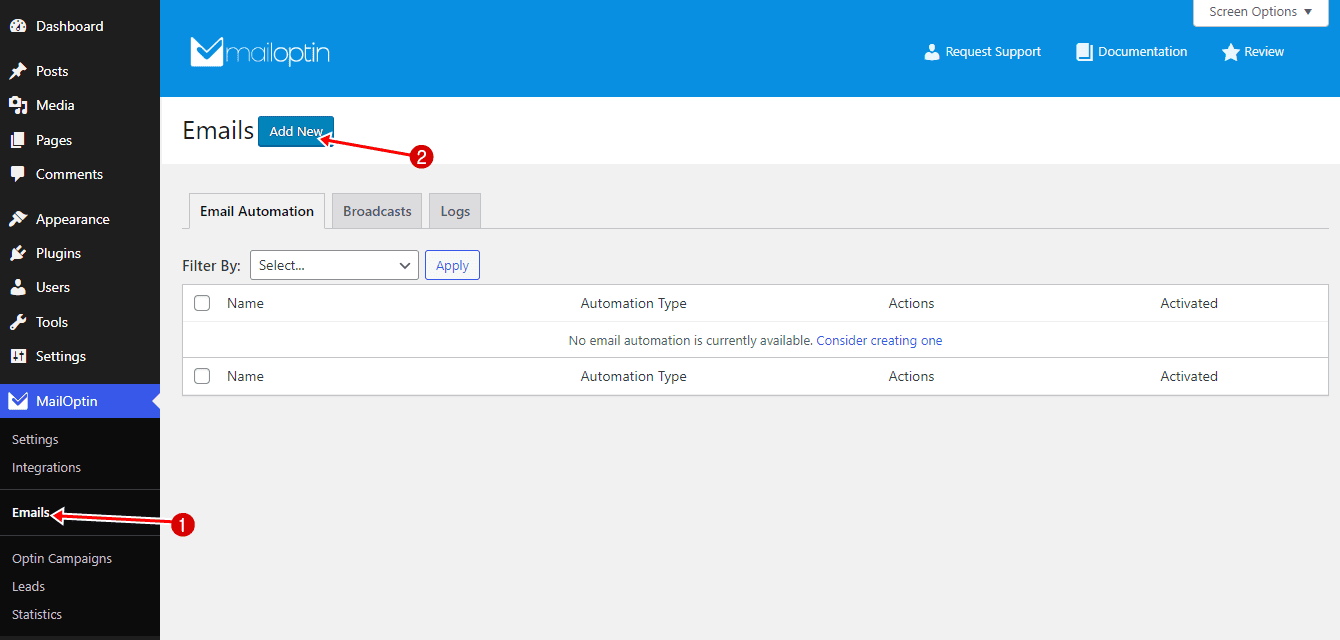
Then click on “Create Now” under Broadcast.
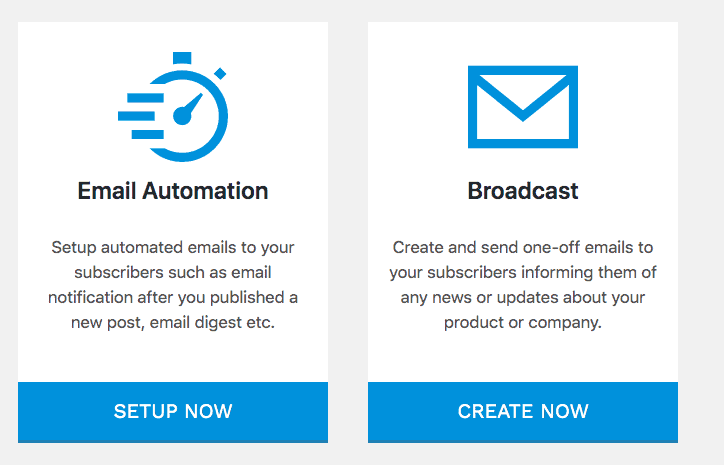
Enter an email subject and select a template.
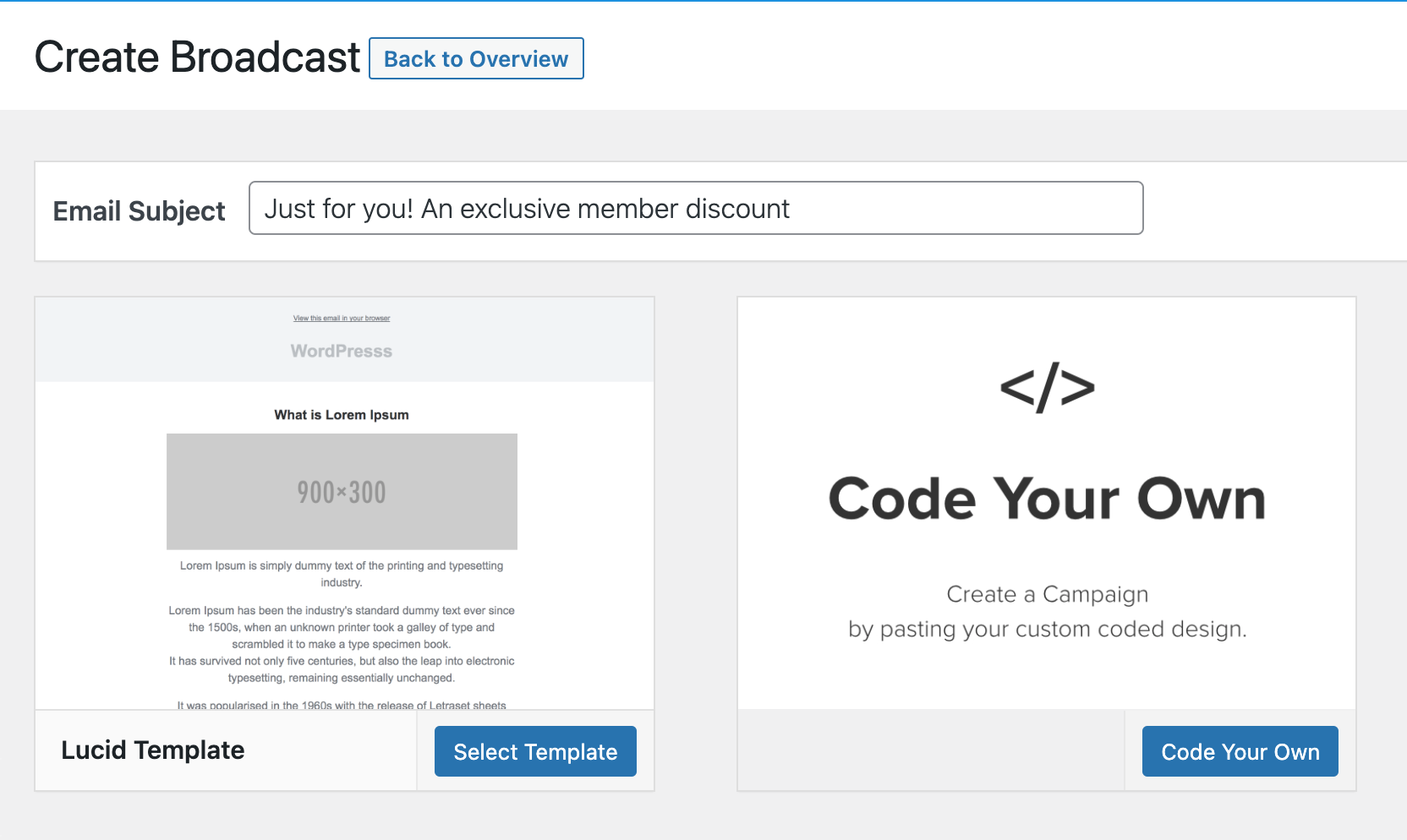
After selecting an email template for the MemberPress newsletter, MailOptin will open the email builder.
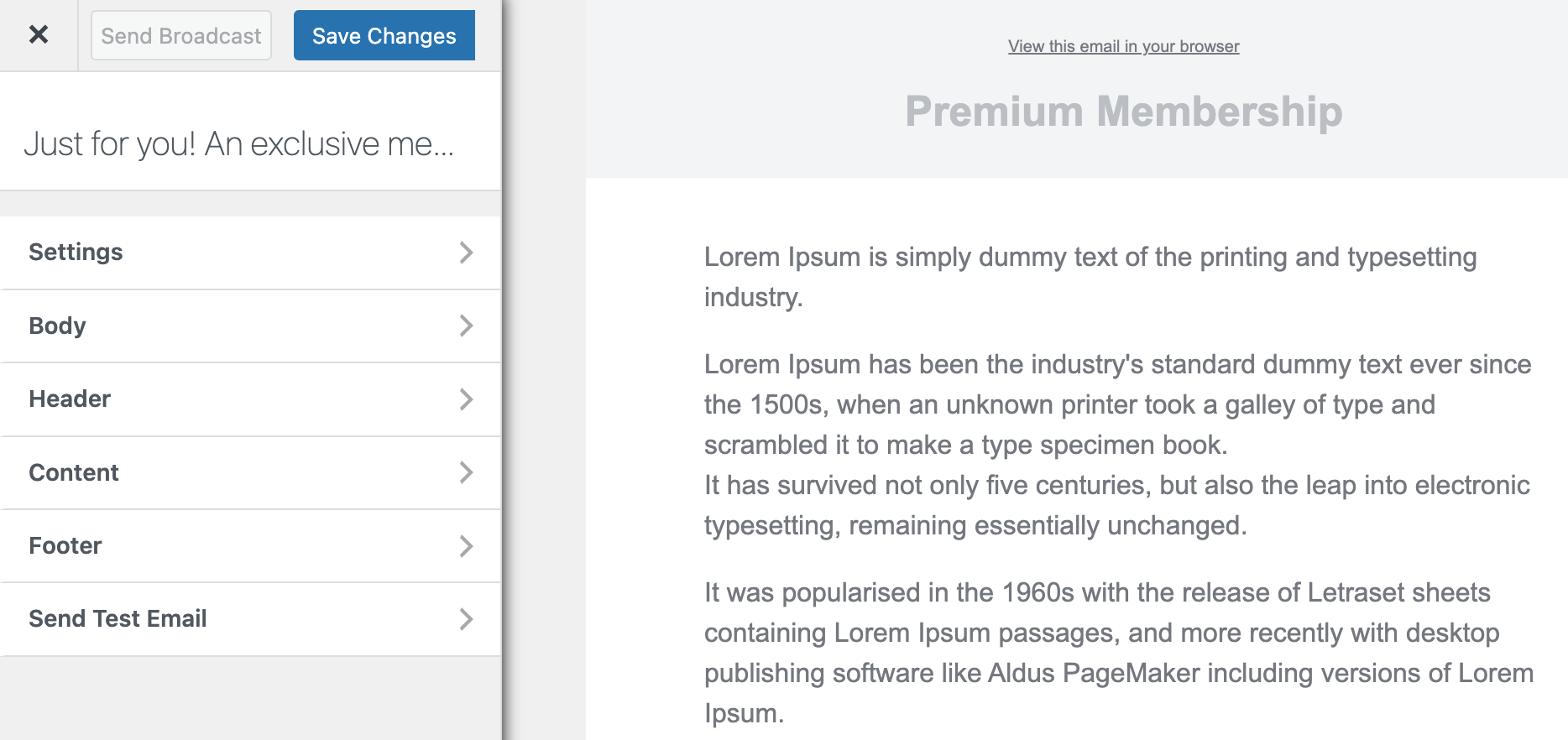
The builder consists of the following panels: Settings, Body, Header, Content, Footer, and Send Test Email.
Settings: You get to modify the email’s subject under this option. You will also be able to connect the email with users to whom you want to send the email.
Body: With this option, you get to change the look of the email template. You can modify the background color, content background color, and text color. You can also add custom CSS to the email template.
Header: The header allows you to set an image that appears at the top of your email. But if you want, you also have the option to remove the header.
Content: This option is self-explanatory. It’s worth noting that it’s the Content option. You can also change the style (i.e., font family and size) and block settings (i.e., padding of the content).
Footer: In the footer, you can show your mailing address and copyright message and add an unsubscription link. You also have the option to remove the MailOptin logo or remove the footer altogether.
Send Test Email: As the name suggests, you can send a test email to anyone using this option, including yourself.
Open the content panel to craft and style the email message or body to your heart’s content.
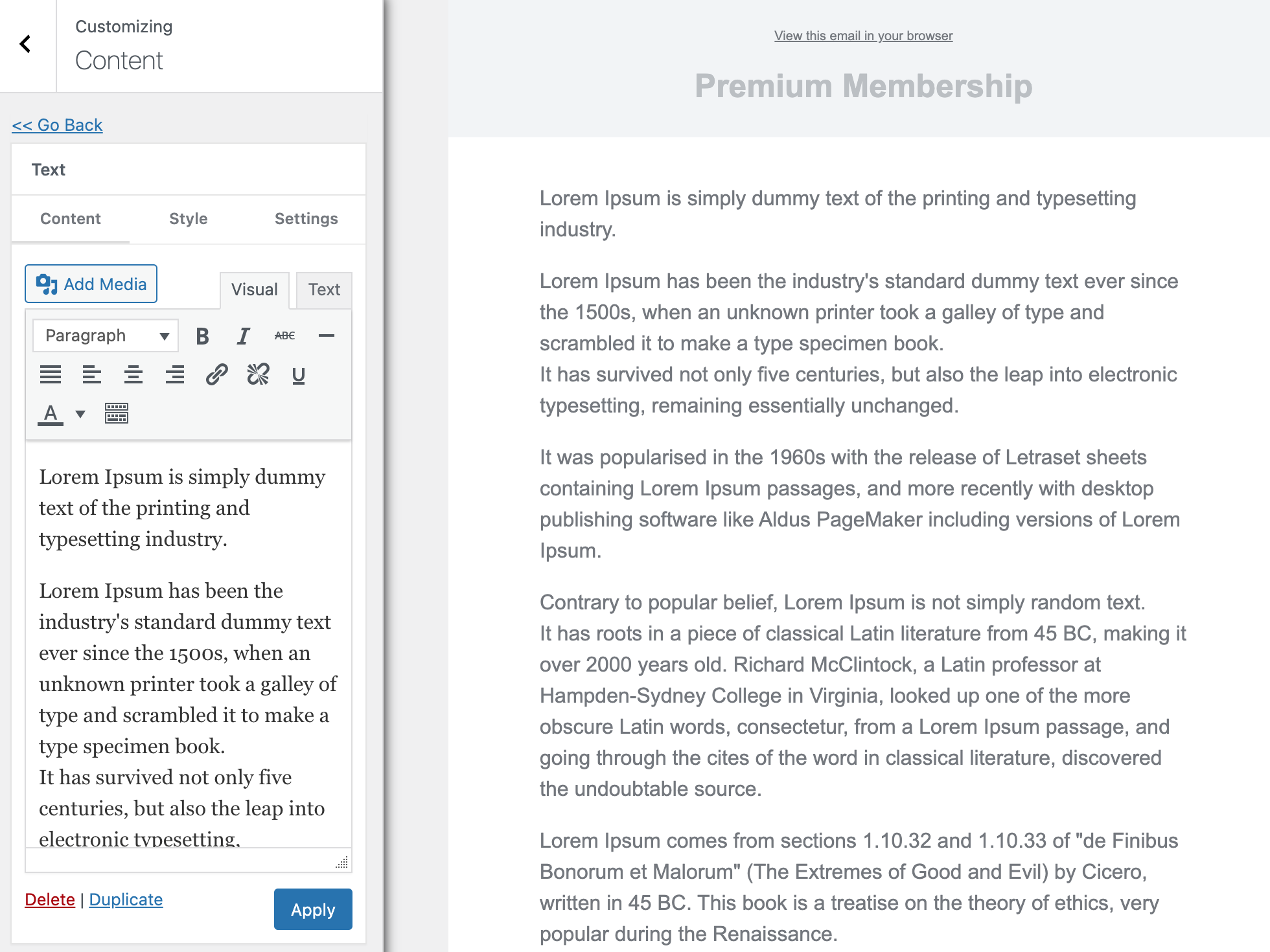
Once you’ve finalized your email content, head to the Settings panel to configure the recipient options.
Choose MemberPress as the connection or recipient, which ensures your email will be sent to all MemberPress members.
To send an email to members of specific memberships, use the “Restrict to Memberships” setting. If you need to target specific members, opt for the “Restrict to Selected Members” setting.
For emails intended for specific memberships and selected individual members, use the “Restrict to Memberships” and “Restrict to Selected Members” settings together.
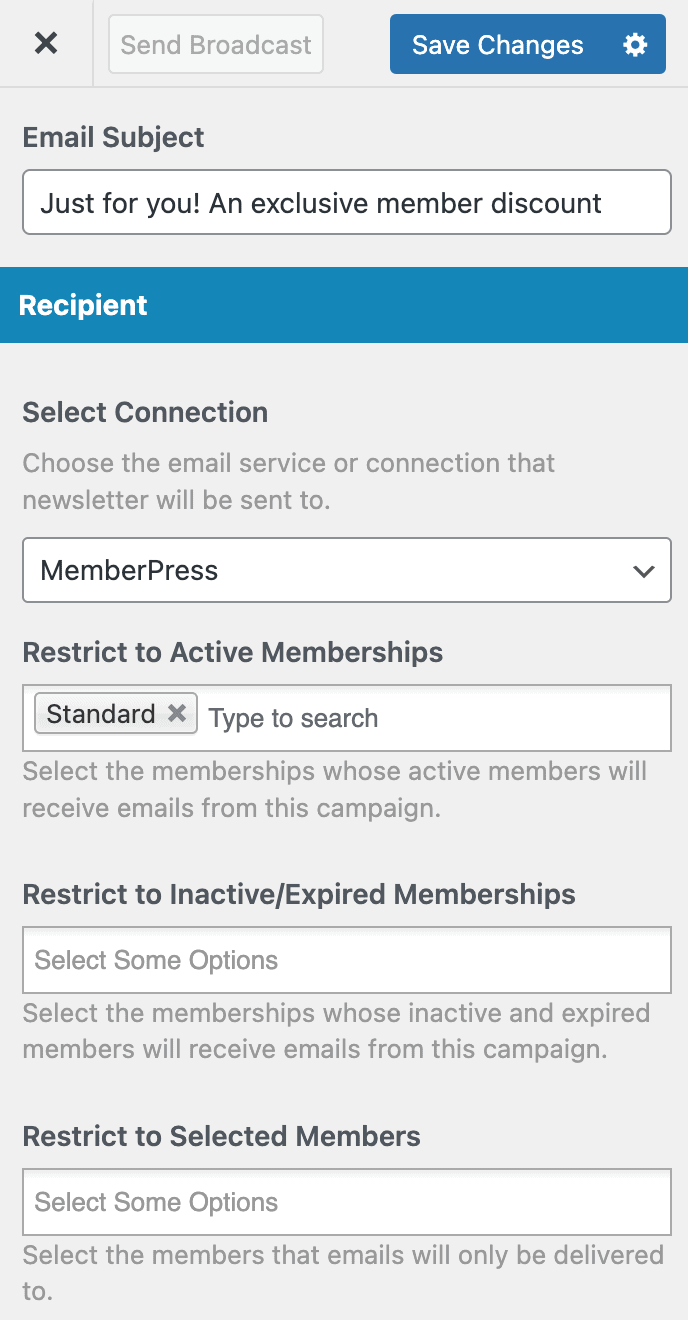
When you are done, click the “Save Changes” button to enable the “Send Newsletter” button, which you will click when you finally decide it’s time to send the email.
Setting Up Email Automation to MemberPress Members
With MailOptin, you can set up email automation to email your paid subscribers or users whenever you publish a new post or article. You can also set up a daily, weekly, and monthly email digest of your published posts to your members.
Setting Up New Published Post Email Automation
To get started, go to MailOptin >> Emails and click the Add New button. Select “Email Automation”

Enter a title for the automation, select “New Post Notification, ” and select an email template to open the email builder.
Here’s how to use the custom-coded email template.
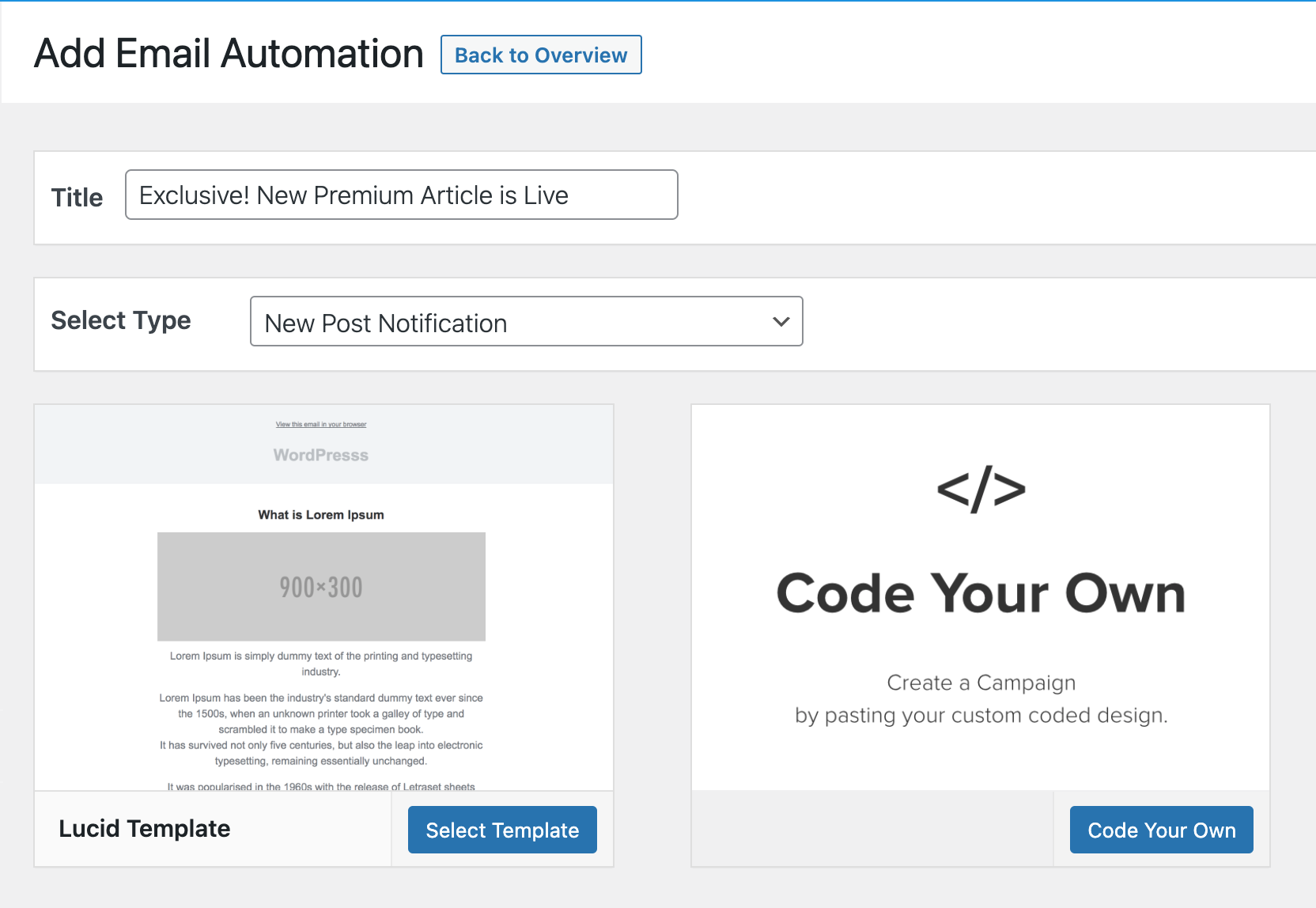
On the email builder, use the Body, Header, Content, and Footer panels to customize the email template to your heart’s content. You can change colors, add a header image, add custom content, and more.
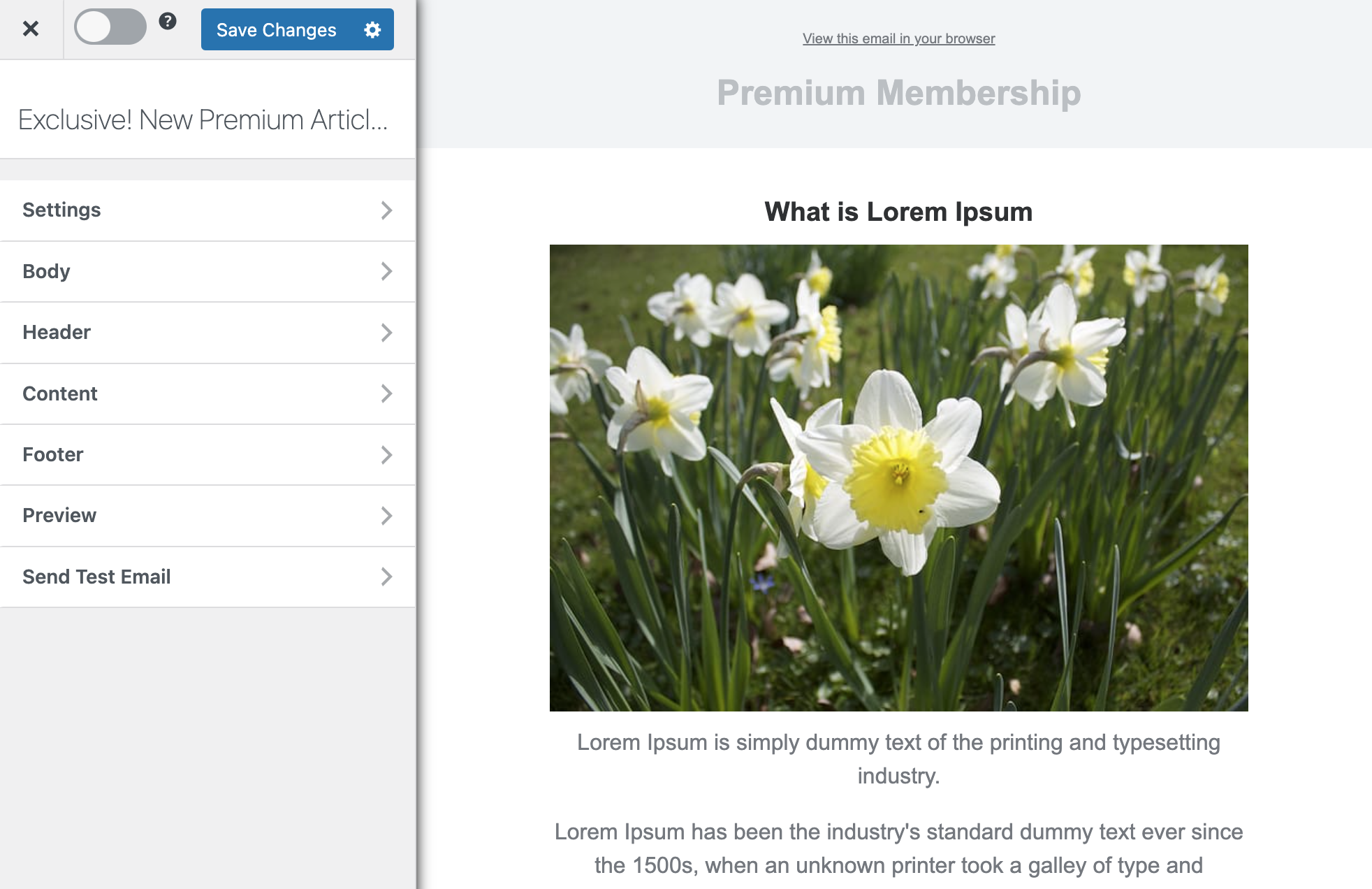
The Settings panel is where the actual setup is done. Open it to set up the email subject and the maximum content length. You can also restrict the automation to specific categories, tags, and authors. This is ideal if you want to send an email when blog posts are added to a specific category in WordPress.
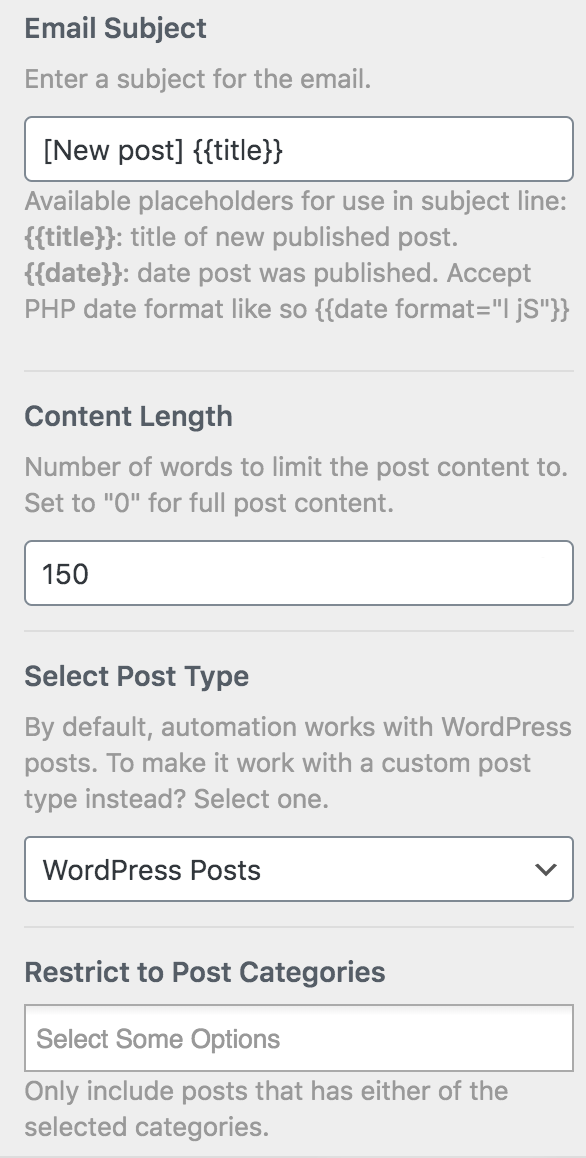
You can also restrict the automation to certain post authors or authors that belong to specific memberships.

Next, scroll down to the Recipient section and select ‘MemberPress’.
To send the email to members of specific memberships, use the ‘Restrict to Memberships’ setting. If you want to target specific members, use the ‘Restrict to Selected Members’ option.

When you are done, click the Save Changes button at the top right corner and then toggle the activation switch to the right to enable the automation.
Setting Up Email Digest Automation
Similar to the New Post Notification setup explained above, when creating the automation, select “Posts Email Digest” and choose a template.
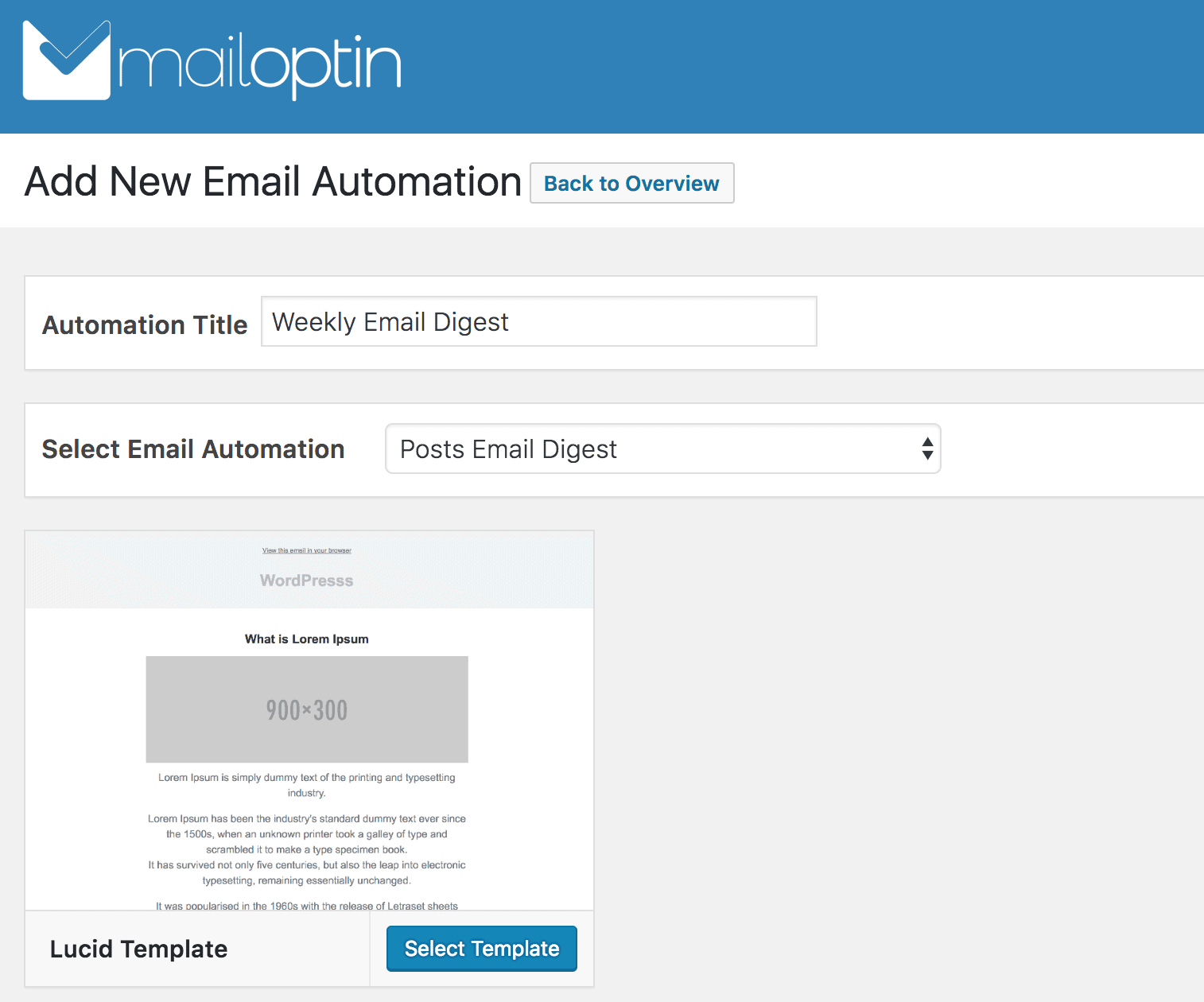
Next, set up and customize your email content and settings.
In the recipient section, choose MemberPress and select the specific memberships whose members you want to receive the automated emails.
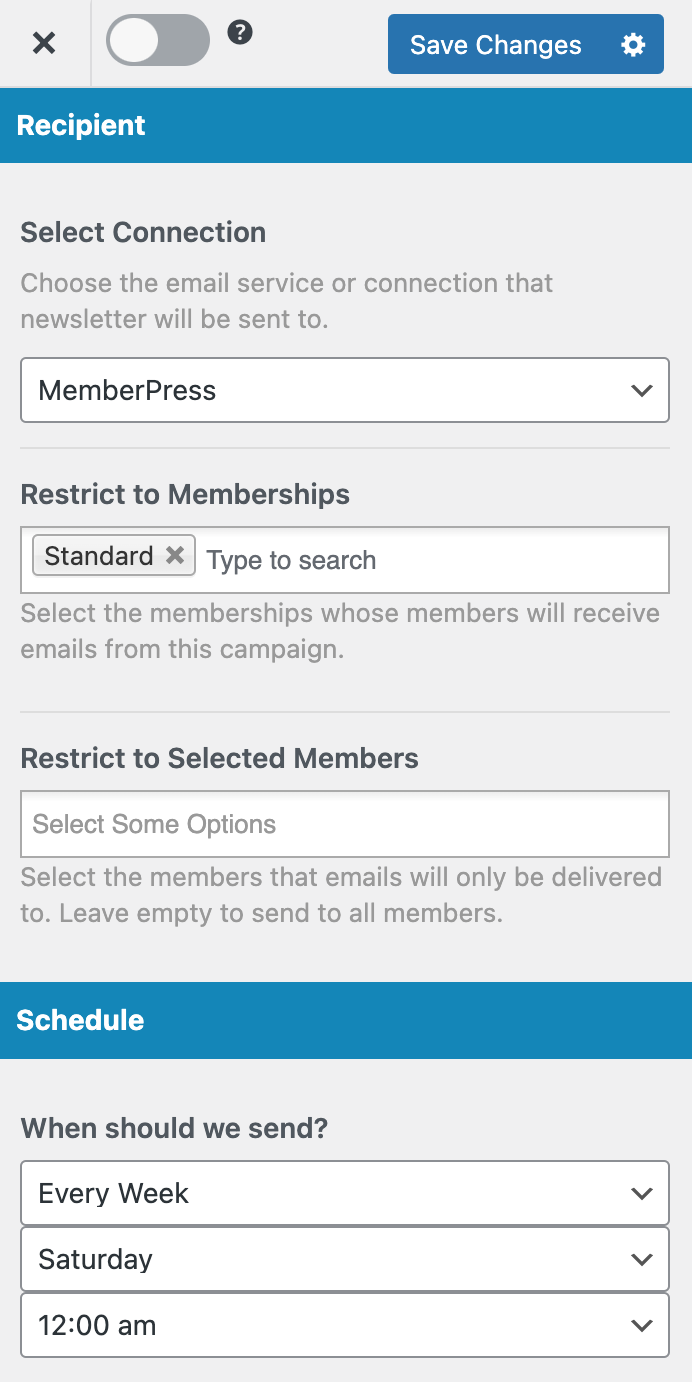
Use the Schedule section to decide when to send out the email, which could be daily, weekly, or monthly.
Don’t forget to save your changes and activate the automation.
Conclusion
Sending bulk emails or newsletters to your membership site users is a powerful tool for any website owner. When done responsibly, without spamming, it can be a win-win for both you and your members—enhancing engagement and communication.
We hope this article has helped you learn how to send emails to MemberPress members effectively.
If you’re using email marketing software on your membership or online course website, note that MailOptin also offers the ability to automatically subscribe MemberPress members to your email list as they sign up, further streamlining your communication efforts.
